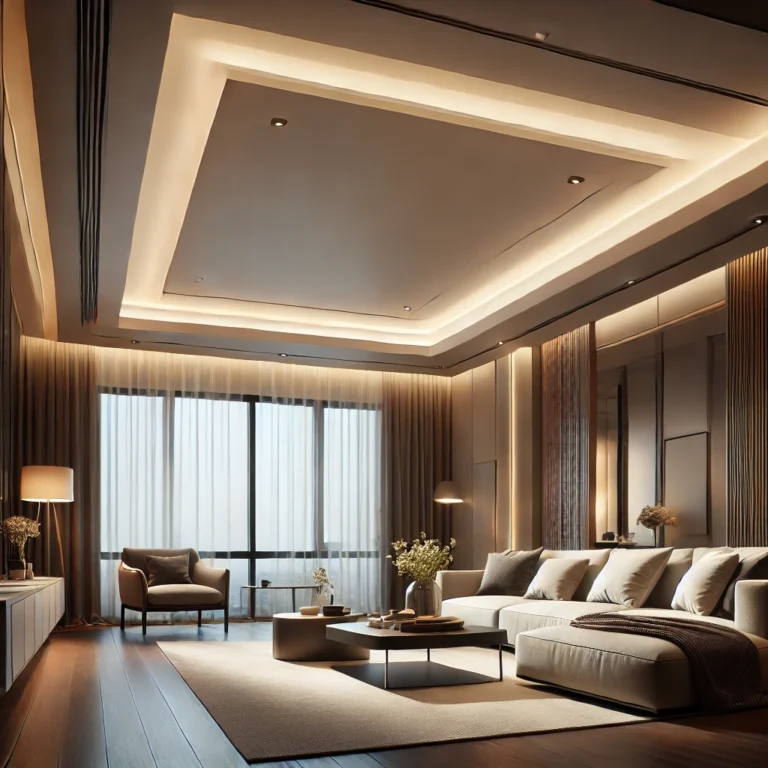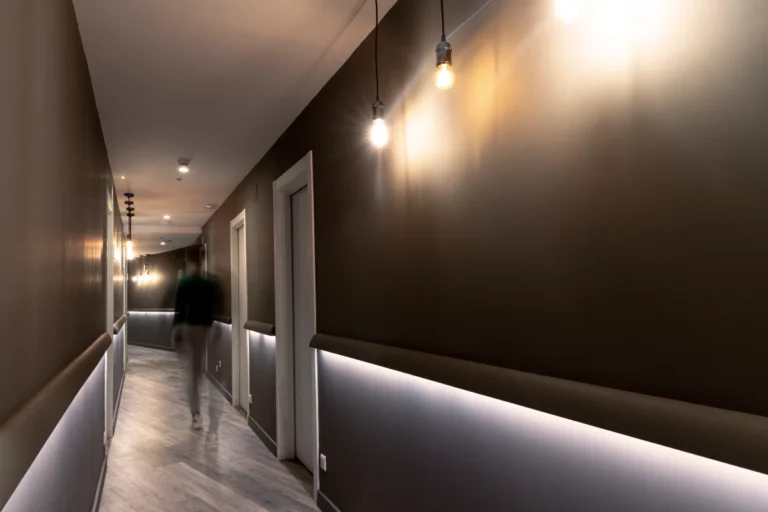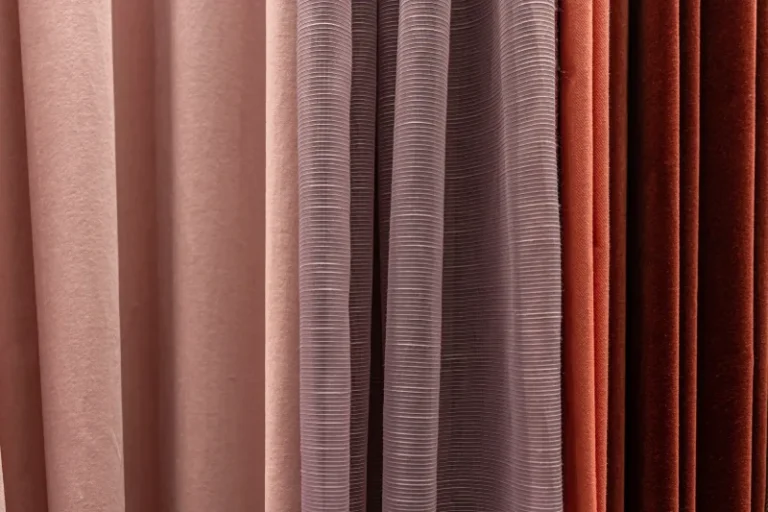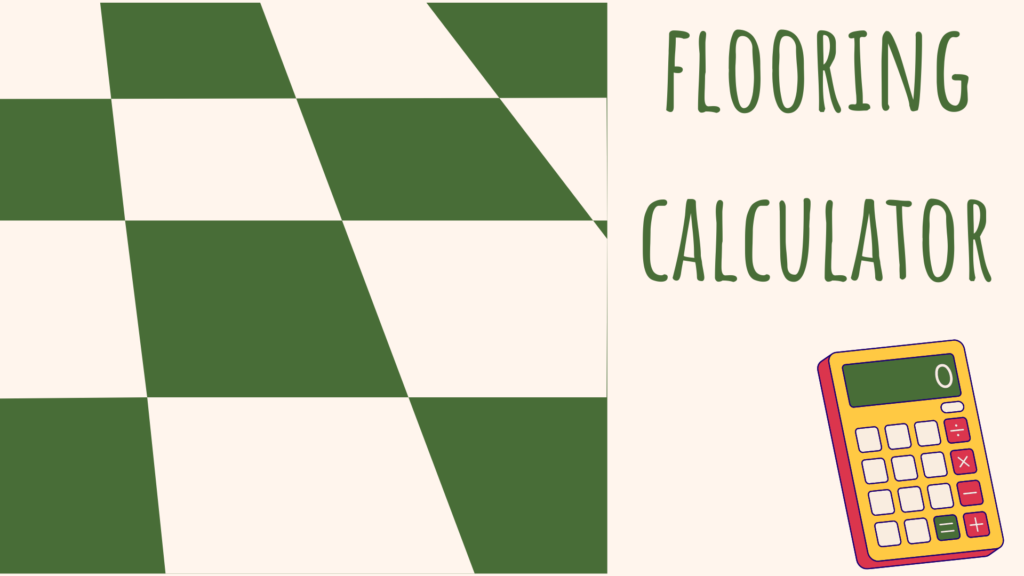Selecting the appropriate curtain length is more than a mere aesthetic choice; it influences the room’s ambiance, light control, and overall functionality. Curtains serve as a bridge between the architectural elements and interior décor, playing a pivotal role in defining a room’s character. By comprehending the distinctions between sill and floor-length curtains, you can tailor your window treatments to harmonize with your design objectives and practical requirements, ensuring both beauty and utility in your living spaces.
Table of Contents
Understanding Sill Curtains and Floor-Length Curtains
What Are Sill Curtains?
Sill curtains, often referred to as café curtains, are tailored to hang just above the windowsill, providing a charming and functional window treatment. Commonly found in kitchens and bathrooms, these curtains allow ample natural light while maintaining privacy. They are crafted from lightweight fabrics such as cotton, linen, or voile, which contribute to a casual and airy ambiance. The versatility of sill curtains makes them suitable for various interior styles, from rustic farmhouses to modern minimalist designs.
What Are Floor-Length Curtains?
Floor-length curtains extend down to the floor, creating an elegant and formal appearance. They are suitable for living rooms, dining rooms, and bedrooms, adding a touch of sophistication. These curtains come in various materials, from heavy drapes to light sheers, catering to different design preferences.
Key Differences Between Sill and Floor-Length Curtains
Style and Aesthetic Appeal
Sill curtains exude a relaxed and informal charm, making them perfect for cozy, intimate spaces. Their shorter length allows for abundant natural light, creating a bright and welcoming atmosphere while still offering a degree of privacy. This makes them particularly suitable for kitchens, bathrooms, and small living areas where a light and open feel is desired. Conversely, floor-length curtains introduce a dramatic and polished aesthetic, enhancing the perceived height of the room and adding a sense of grandeur. They are ideal for formal living rooms, dining areas, and bedrooms, where an elegant and sophisticated look is preferred. The choice between sill and floor-length curtains should align with the room’s function, desired ambiance, and existing décor.
Practicality and Functionality
Sill curtains offer practical advantages, especially in rooms where furniture, radiators, or countertops are positioned directly below the window. Their shorter length prevents obstruction, allowing for free movement and easy access to the window area. Additionally, sill curtains are generally easier to clean and maintain, as they are less likely to collect dust and dirt compared to longer drapes. On the other hand, floor-length curtains provide superior insulation and light control, making them beneficial in maintaining room temperature and privacy. However, they may require more frequent cleaning due to dust accumulation at the hem and can be more challenging to manage in households with pets or young children.
When to Choose Sill Curtains?
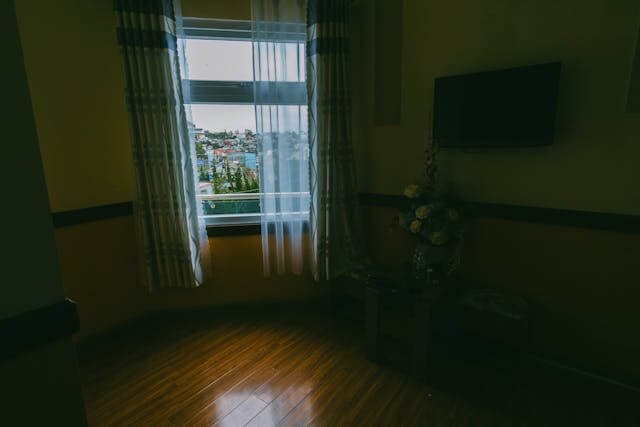
Best Situations for Sill-Length Curtains
- Kitchens and Bathrooms: Where moisture and splashes are common, and full-length curtains might be impractical.
- Windows with Obstructions: Such as radiators, furniture, or countertops directly below the window.
Pros and Cons of Sill Curtains
Pros:
- Allow more natural light.
- Easier to clean and maintain.
- Ideal for small or casual spaces.
Cons:
- It may not provide full privacy.
- Less formal appearance.
When to Choose Floor-Length Curtains?
Ideal Scenarios for Floor-Length Curtains
- Formal Living and Dining Rooms: To create an elegant and sophisticated atmosphere.
- Bedrooms: For enhanced privacy and light control.
- High Ceilings: To emphasize room height and add drama.
Pros and Cons of Floor-Length Curtains
Pros:
- Offer a luxurious and formal look.
- Provide better insulation and light control.
- Enhance the perception of room height.
Cons:
- Require more maintenance.
- It can be more expensive due to additional fabric.
- It may not be suitable for all window placements.
Measuring for the Perfect Curtain Length
Accurate measurements are crucial for achieving the desired look and functionality of your curtains. Improper sizing can lead to aesthetic imbalances and functional issues, such as inadequate coverage or excessive fabric pooling on the floor. To ensure a perfect fit, consider using tools like the Curtain Length Size Calculator and refer to comprehensive guides like the How to Measure Curtains Guide. These resources provide step-by-step instructions and tips to help you measure your windows accurately and select the appropriate curtain length for your space.
Tips for Measuring Sill Curtains
- Measure Window Width: Measure the width of the window frame.
- Determine Curtain Length: Decide where you want the curtain to end—typically just above the sill.
- Add Width for Fullness: Multiply the window width by 1.5 to 2 times for desired fullness.
For detailed instructions, refer to our How to Measure Curtains Guide.
Measuring for Floor-Length Curtains
- Measure from Rod to Floor: Measure from the curtain rod’s position to the floor.
- Decide on Curtain Style: Choose whether you want the curtains to just touch the floor, hover slightly above, or puddle on the floor.
- Account for Hardware: Include the length of rings or hooks in your measurements.
Utilize our Curtain Length Size Calculator for precise measurements.
FAQs
Should Curtains Go to the Floor or Sill?
The decision between floor-length and sill curtains hinges on several factors, including the room’s function, aesthetic goals, and practical needs. Floor-length curtains impart a formal and elegant appearance, making them suitable for living rooms, dining areas, and bedrooms where a sophisticated ambiance is desired. They also provide enhanced privacy and light control. In contrast, sill curtains offer a casual and practical solution, ideal for kitchens, bathrooms, or rooms with furniture placed beneath the windows. They allow for more natural light and are easier to maintain. Assessing the specific requirements and style preferences of each room will guide you in choosing the appropriate curtain length.
How Long Should Curtains Hang Below the Window Sill?
Sill curtains typically end just above or at the window sill. If you prefer them to hang below, extending 4 to 6 inches below the sill is common.
Is It Better to Have Floor-Length Curtains?
Floor-length curtains are ideal for formal settings and rooms where you want to create a sense of height and elegance. However, they may not be practical for all spaces, especially where obstructions exist.
Choosing the Best Option for Your Space
Tailoring Curtain Length to Your Design Goals
When selecting the appropriate curtain length, evaluate the room’s purpose, existing décor, and your personal style preferences. Sill curtains are well-suited for casual and functional spaces, such as kitchens and bathrooms, where practicality and ease of maintenance are paramount. They complement informal décor styles and allow for ample natural light. Floor-length curtains, on the other hand, are ideal for formal and elegant rooms.
Elevate Your Space with the Right Curtains
Selecting the appropriate curtain length can transform your space, balancing aesthetics and functionality. By understanding the differences between sill and floor-length curtains, you can make a choice that enhances your home’s beauty and comfort.



